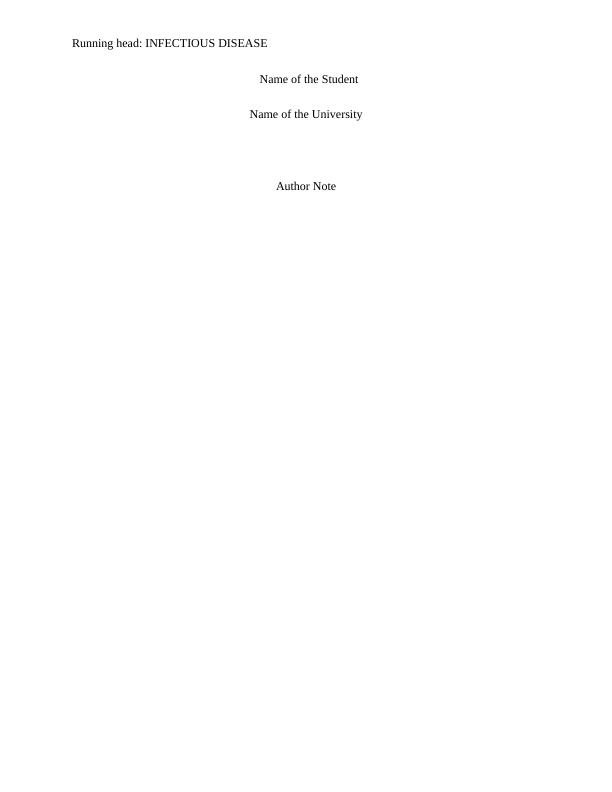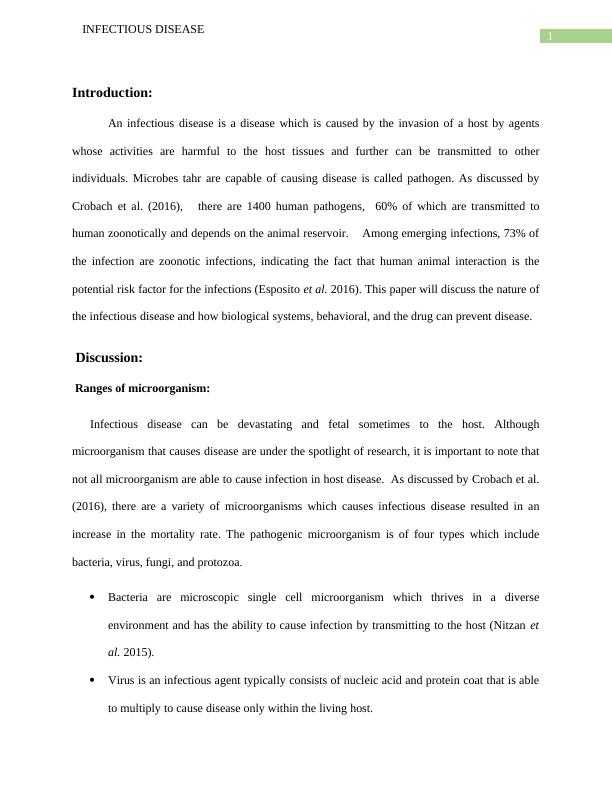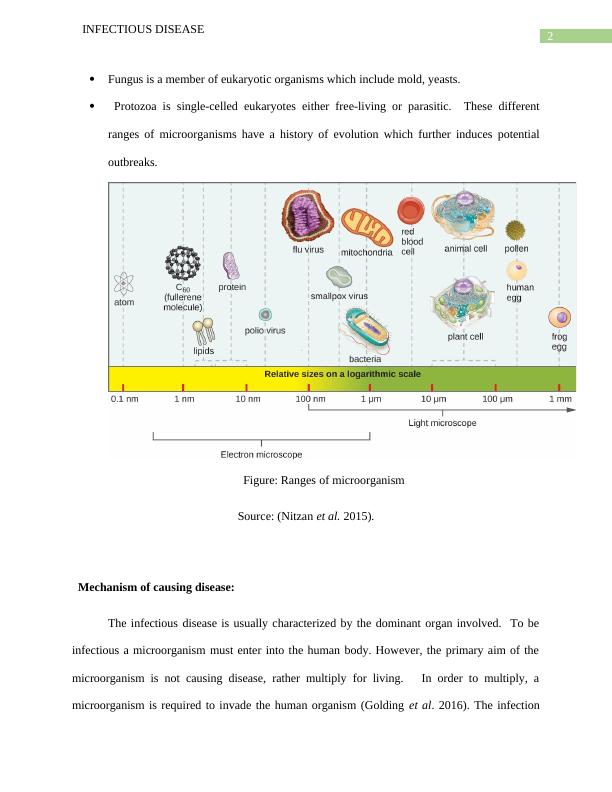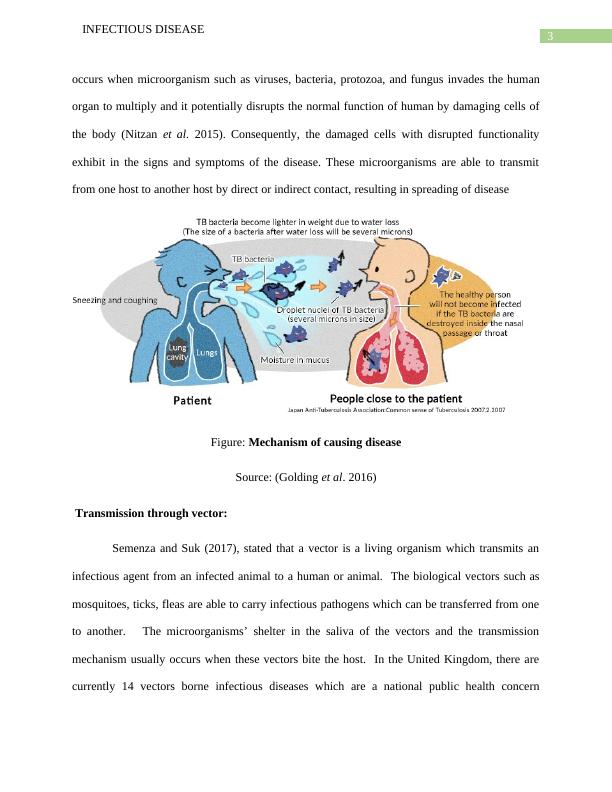Infectious Disease: Nature, Transmission, and Prevention
Added on 2023-01-16
19 Pages3419 Words39 Views
End of preview
Want to access all the pages? Upload your documents or become a member.
Pathogens and Immunity in Nursing
|17
|3984
|55
Origins and Features of Infection: Bacteria, Fungi, and Viruses
|5
|1027
|347
The most common zoonotic disease in the United States
|13
|3527
|28
Microorganisms, Vector-borne Diseases, and Infection Prevention
|11
|4269
|432
Infection Prevention: Types of Microbiological Organisms, Vector-Borne Diseases, Defense Mechanisms, and Micro-Organism Control
|17
|6916
|360
Understanding Chain of Infection and Modes of Transmission in Workplace
|1
|1926
|494



